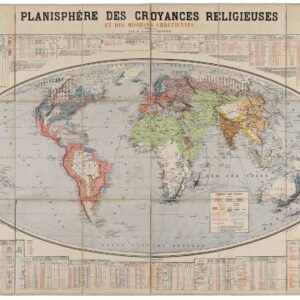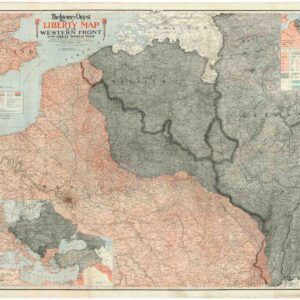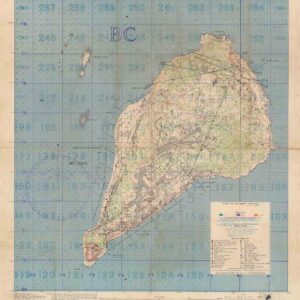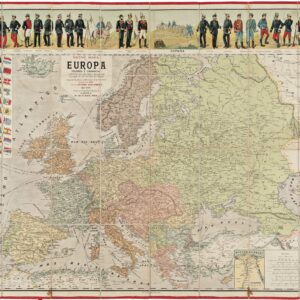Maurice Neumont’s dramatic World War I map of a Europe subject to Prussian aggression.
[Prussian Octopus] En 1788 Mirabeau disait deja: La Guerre est l’industrie Nationale de la Prusse.
Out of stock
Description
Neatline is excited to present this early pictorial map from the First World War, warning against the aggressive German Reich. The map is titled En 1788 MIRABEAU disait deja : LA GUERRE est l’industrie Nationale de la PRUSSE (Already in 1788 Mirabeau was saying: War is the national industry of Prussia) and was compiled by Maurice Neumont in 1917. It is a striking piece of anti-German propaganda issued at the height of World War I.
The map depicts Germany as a monstrous octopus, its tentacles extending menacingly across Europe as a visual representation of Prussia’s expansionist ambitions. Germany is colored red, indicating its gradual territorial annexations since 1740. The scope of Prussian incursions included the seizure of Alsace-Lorraine in 1871 during the Franco-Prussian War, revealing its French outlook on the political landscape. To add an element of satire, the giant octopus is adorned with the Prussian Pickelhaube, or spiked helmet that Hollywood has helped eternalize as a symbol of German military aggression.
A graph at the top right illustrates the historical growth of the Prussian Army, evolving from its 18th-century form to the menacing force of World War I. Textual elements reinforce the visual argument, incorporating quotes such as the Chamber of Deputies’ declaration regarding Alsace-Lorraine’s invasion and statements from the pan-Germanist All-Deutscher Verband, advocating German superiority over other European nations. General Petain’s message in the lower margin emphasizes France’s defensive stance for liberty and preserving a free and independent Europe.
Neumont’s map, with its intimidating imagery and poignant text, is a rare and impactful piece of propaganda that uses compelling visual and textual elements to convey the threat of Prussian militarism during World War I.
Context is Everything
The map emerged amidst the fervor of World War I. It was crafted as part of a propaganda campaign by Maurice Neumont under the initiative of La Conference au Village contre la Propagande ennemie en France. Established in 1917, this organization aimed to bolster patriotic sentiments across rural France through effective counter-propaganda against German efforts.
The octopus motif had previously appeared in propaganda maps to depict aggressive imperialism. Examples are seen in Fred Rose’s Serio-Comic War Map for the Year 1877, representing Russia as the aggressor. Neumont’s map reinvigorated this imagery to portray the Prussian aggression of World War I.
Cartographer(s):
Maurice Neumont (1868-1930) was a Parisian artist who became renowned for his impactful propaganda posters during World War I. Notably, his poster On Ne Passe Pas! 1914-1918 [None Shall Pass], featuring a resolute French soldier on the battlefield, gained significant acclaim. Neumont’s career as a painter and commercial poster artist lasted until he died in 1930. His contributions to propaganda work earned him widespread recognition, including the high French order Légion d’honneur. Neumont collaborated with organizations like La Conference au Village to create the necessary propaganda to bolster France’s patriotic spirit and counter enemy propaganda.
Condition Description
Scattered wear and minor restorations visible on the verso.
References



